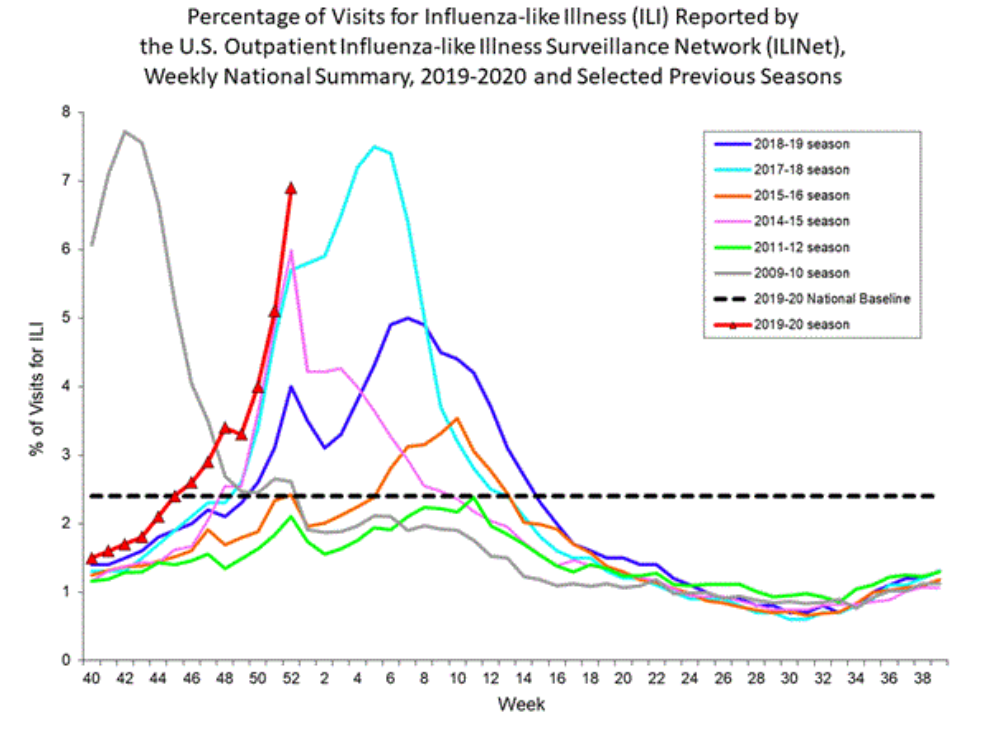Child Flu Deaths Hit Record High for This Time of Year
This year's flu season is shaping up to be a severe one, particularly for children.

This year's flu season is shaping up to be a severe one, particularly for children.
So far this season, 27 U.S. children have died from the flu, according to the Centers for Disease Control and Prevention (CDC). That's the highest number of pediatric flu deaths reported at this point in the flu season since 2003, when the CDC started tracking child flu deaths, according to CNN.
For comparison, during the 2017-2018 flu season, which was one of the worst flu seasons in recent years, 13 pediatric flu deaths were reported at this point in the season, according to CDC data. (By the end of the 2017-2018 season, 187 children had died from the flu, making it a particularly deadly flu season.)
Related: 6 Flu Vaccine Myths
Flu season is notoriously unpredictable, but the trajectory of this season (2019-2020) is worrying — the season started early and does not appear to have reached its peak. It's unclear when cases will start to go down.
"Hopefully, this turns around and comes down, but if it continues on the trajectory it's on, it's not going to be good," Dr. Anthony Fauci, director of the National Institute of Allergy and Infectious Diseases, told CNN.

During the last two weeks of December, the percentage of people visiting the doctor for flu-like illness jumped from 5% to 7% of all doctors' visits. This uptick in flu-related visits could be due, in part, to a decrease in routine doctor visits for other conditions during the holidays, the CDC said.
Sign up for the Live Science daily newsletter now
Get the world’s most fascinating discoveries delivered straight to your inbox.
Still, this data indicates high flu activity. For comparison, during the 2014-2015 flu season — another bad year for flu — the percentage of flu-related doctors' visits peaked at 6%; and during the 2017-2018 flu season, it peaked at around 7.5%.
Another odd thing about this year's flu season is that it has been dominated by a type of flu virus known as influenza B. That's pretty unusual — typically, influenza B does not cause as many cases as influenza A strains (H1N1 and H3N2); and influenza B tends to show up later in the flu season rather than at the beginning. Influenza B may be more deadly in children than adults, according to a 2012 study.
What's more, although influenza B remains the dominant strain this year, cases of influenza A are starting to increase. Some experts have speculated that there could be a second peak in flu activity with influenza A later in the season, Live Science previously reported.
The CDC estimates that there have been at least 6.4 million flu-related illnesses, 55,000 flu-related hospitalizations and 2,900 deaths from the flu so far this season.
But it's still not too late to get a flu shot, the CDC said. Quadrivalent flu vaccines protect against two strains of influenza A virus and two strains of influenza B. Flu shots are recommended for everyone ages 6 months and older.
Originally published on Live Science.


Rachael is a Live Science contributor, and was a former channel editor and senior writer for Live Science between 2010 and 2022. She has a master's degree in journalism from New York University's Science, Health and Environmental Reporting Program. She also holds a B.S. in molecular biology and an M.S. in biology from the University of California, San Diego. Her work has appeared in Scienceline, The Washington Post and Scientific American.









